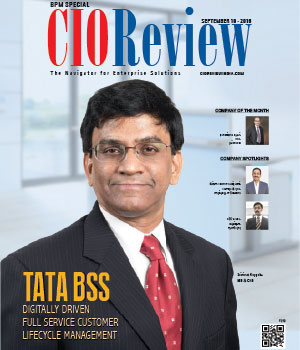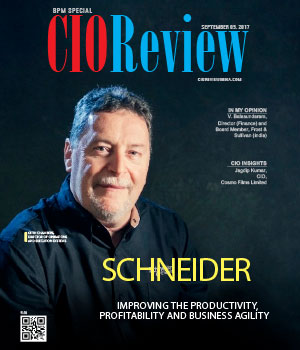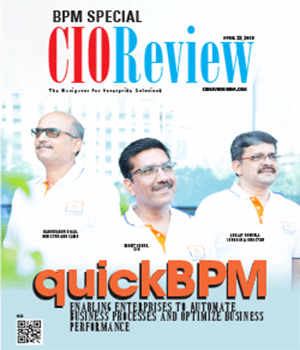
Digital Mindset Leading to Digital Transformation
Chandan Khaitan, SVP & Head - Digital Transformation, E-commerce, and Technology, Walmart India Private Limited
 How do we Digitally transform our business/company?
How do we Digitally transform our business/company?
A question that is often asked these days.
The responses could be one or all of the below and these sound familiar too.
- Let’s add e-commerce as an additional sales channel
- Let’s have social media presence and start digital marketing
- Improve IT Infrastructure, Technologies or Applications
The fact is that Digital Transformation is not about doing ‘anything different’, rather doing things ‘differently’. It is about bringing ‘Transformational’’ change rather than being ‘Incremental’. Companies such as Uber, AirBnB, Netflix etc. are testimony of the transformational change impact. Being digitized is not just an add-on; it’s about fundamentally changing the way one thinks about the customer or way of doing business etc. It is about being data-driven and working with agility.
Digitization would mean rethinking the complete business model or the way customer needs to be served. For example – a leading turbine company was earlier selling turbines and also providing downtime servicing as and when it happens. That was older business model. Now, this company has added IOT device in the turbine which on real time, feeds data of turbine’s functioning and helps the company predict downtime and provide the servicing proactively. This is re-thinking the complete product. There is whole lot of service element being added to the product, thanks to data.
"There are both good and flip sides of digitization. Good part is that it always puts ‘Customer’ first. The flip side is that it is no longer a utopian thinking; one doesn’t have the option but to adapt or perish"
Let’s take another example of smart houses. Here the company is not just providing you the devices but also services like energy management.
So, there are three key elements of ‘Digitization’:
1. Being customer fanatic
2. Being extremely data driven but not ignoring gut and the intuition
3. Challenging the status quo ‘always’; even to the extent of challenging the complete business model
There are both good and flip sides of digitization. Good part is that it always puts ‘Customer’ first and hence ‘Customer’ is set to be winner. The flip side is that it is already here; it’s no longer a utopian thinking; one doesn’t have the option but to adapt or perish. Following are some of the essentials to adapt Digitization:
1. Tone at the top
It’s not just about being mere part of the Strategy deck or CEO’s long term vision statement. It needs to be visible in how the CEO including the CXOs showcase digital mindset in every discussion, thoughts and actions. It can’t just be a mandate because that will only influence a mindset change but may not drive it. Leaders would need to foster an environment where employees feel safe and encouraged to experiments with their ideas; ‘Fail fast and fail cheaply’ becomes a mantra.
2. Perfection is the enemy of getting `work done’
Being comfortable with going live with Minimal Viable product (MVP) and then adjusting it on the fly is the key to win with today’s demanding and evolving customer. Lot of inspiration comes from the software industry - agile development, MVP thought process, cross functional teams working together to create prototypes, to test them and to release them out in a fast manner. In order to create agility, an accelerated loop of Develop - Go Live - Measure - Change is required and to do that it needs an environment of collaboration and understanding individual roles.
3. Fall in love with Problem
Gone are the days where in meeting will start with someone pulling out a solution without even going in depth of what needs to be solved. Today is the world of falling in love with the problem and not being solution oriented. This will force the organization to be extremely customer oriented and letting data do most of the talking.
4. Old Power vs New Power
In its book ‘New Power’ Jeremy Heimans explains the difference between ‘Old Power and New Power’
Old power works like a currency. It is held by few. Once gained, it is jealously guarded, and the powerful have a substantial store of it to spend. It is closed, inaccessible, and leader-driven. It downloads, and it captures.
New power is like a current. It is made by many. It is open, participatory, and peer-driven. It uploads, and it distributes. Like water or electricity, it’s most forceful when it surges. The goal with new power is not to hoard it but to channelize it.
New power gains its force from people’s growing capacity - and desire - to go far beyond passive consumption of ideas and goods. (Views expressed in the article are of the author only)
CIO Viewpoint
Gen AI: Transforming Cloud Solutions for...
By Matt Yanchyshyn, VP - AWS Marketplace & Partner Services, AWS
Upcoming Technological Advancements in Payments...
By Pinak Chakraborty, CIO of Airtel Payments Bank
Shaping the Future of AI: Talent, Innovation,...
By Yann LeCun, Chief AI Scientist at Meta
CXO Insights
Looking towards Operations Management: What...
By Dr. Vandana Sonwaney, Director, SIOM
Strategic Implementation And Control
By SURESH.V. MENON-PRINCIPAL CONSULTANT SIX SIGMA & STRATEGIC MANAGEMENT, ADVISORY (BUSINESS EXCELLENCE)
Grand Strategies Used In Strategic Management









